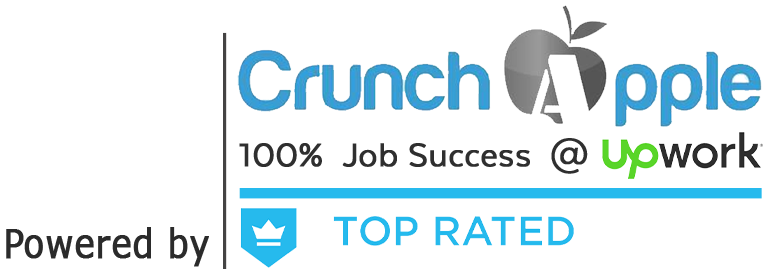Oracle HRMS and Payroll Key Flexfields
Oracle EBS HRMS and Payroll Key Flexfields
In this document I will try to propose the best way to configure the KFF’s one by one of HRMS & Payroll which is been used in different implementations in Saudi market and especially in the Governmental section.
Oracle HRMS
| 1. Grade KFF.
2. Job KFF. 3. Position KFF 4. Competency KFF (It is used in Career Management). 5. Collected Agreement KFF (Also they have one for HR for special use for collective agreement ) |
Oracle Payroll
| 6. People Group (It is used in Assignment window)
7. Cost allocation. 8. Bank Account KFF (It is used in Payment Method) |
Suggested segments of each Flexfield
1 – Grade KFF :
You use grades to compare roles in an organization. Grades represent relative levels of management or seniority in an enterprise.
Oracle HRMS enables you to use grades to record the relative status of employee assignments and to determine compensation and benefits, such as salary, overtime rates, and company car. You can define grades to distinguish different staff groups such as Management, Administrative, Technical.
Using Oracle HRMS, you can define your grade structure and represent the various compensation levels within a grade
Suggested Segments
1- For Grade type (Value list) Base on the Company Requirement.
2- For Grade name (Value list).
2 – Job KFF :
You can define either a simple or a complex job key flexfield structure. Individual jobs can be a combination of segment values. For example, a job can be a one or two segment name, like Manager, Manager.Senior, Consultant, Consultant.1. This is typical if you use Jobs in your enterprise. Jobs are dated so that you can start and end definitions.
You extend the types of information you use to define a job by adding more segments. For example, the jobs you define can be Manual.A.1.ShiftB, Manual.A.2.ShiftA, Clerical.C.1. and Clerical.C.2. This is useful if you use Jobs as the primary roles in your enterprise. You can use the Configuration Workbench to help you decide configuring the job structure within your enterprise. You have one job structure for HR job for a business group. You canalso create additional job structures for other kinds of roles to suit your enterprise needs.
Suggested Segments
1- Main Group (Value list)..
2- Sub Group (dependant in Main Group) (Value list).
3- Detail Group (dependant in Sub Group) (Value list).
Difference Between Jobs and Positions
A simple distinction is to get people to think about whether the emphasis within their own enterprise is to manage people or posts. A simple question to help the decision-making process is to ask what happens when an employee is terminated. If a role continues to exist after the employee leaves, then think about Positions. If a role ceases or is re-evaluated when the employee leaves, then think about Jobs. Jobs are generic roles within a business group. They are independent of any single organization. For example, the jobs ‘Manager’ and ‘Consultant’ can be in many organizations. Position is a specific role, or function, that exists in one, and only one, organization. Positions show more management reporting detail than organizations alone. Position definition includes Job and Organization. Positions are typically used in Public Sector, Government, Education, Health, and any large enterprises to show management positions.
3 – Position KFF :
You use the Position key flexfield to define each position as a combination of segment values. The simplest option is one segment with no validation for ‘Title’. When deciding on the number of segments a flexfield has, it is usually better to set up a few small segments rather than one big segment. For example, if position includes name, region and code, you could define 2 or 3 segments. This gives users a greater choice in reporting using individual segments.
Positions are datetracked so that you can maintain a continuous record of changes. Every position in the enterprise is unique. If every region has a Vice President, you must set up a unique position name for each VP such as VP Sales North, where VP is the job definition for each position, Sales is the Position and North refers to the region. You can use the Configuration Workbench to help you decide configuring the position structure within your enterprise.
Suggested Segments
1- Position name (Value list).
2- Position Number.
4 – Competency KFF : (It is used in Career Management)
Use this flexfield to create competencies specific to your business group. You define competencies for performance management and appraisals of employees. You can also use the Competence key flexfield to record a hierarchy of competencies.
You need to define the structure for this flexfield before you define the business group. You can create an additional key flexfield that can be used to create global competencies that are available across all business groups. You can, however, use the same key flexfield you have defined for the business group if you want. You define the key flexfield in the HR: Global Competence Flex Structure profile option. You must specify one of the segments as the Default Attribute using the flexfield qualifier.
You must also attach the Others flexfield qualifier to all other segments in the structure.
Suggested Segments
1- Competency Type.
2- Competency Name.
5 – Collected Agreement KFF (One for HR for special use for collective agreement)
Use this flexfield to record the grade factors that are defined within a collective agreement. A collective agreement grade is defined by a combination of values that you enter using grade factors. A grade factor is a user-defined field that you set up as part of the grade structure in the Collective Agreement Grades (CAGR) key flexfield.
The Collective Agreement Grades key flexfield enables you to create an unlimited number of grade structures. Once the grade structure is recorded, you can link it to a collective agreement and enter the required factor values for each reference grade. You can define up to 20 segments within each structure. Each segment refers to a grade factor that is available as part of the grade structure.
You do not need to define any structures for the Collective Agreement Grades flexfield before you can use Oracle HRMS.
6 – People Group (It is used in Assignment window) be careful when you configure this key flexfield.
The People Group flexfield enables you to add information to the records of the following types of people who are eligible for a specific compensation:
- Employees
- Contingent workers
- Applicants
You can use the individual segments of these flexfields to identify or report on specific groups of people. You need to set up at least one segment of this flexfield before you can begin entering employee assignments. If you do not, you will not be able to use the Assignment window for employees or applicants.
7 – Cost allocation (the best way to configure this you need to see GL Account Key flex field and project requirement ) if you do not have the financial module you can leave it.
8 – Bank Account KFF (It is used in Payment Method) in Saudi localization already configured.


